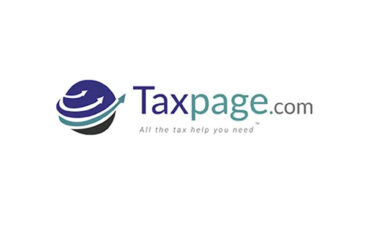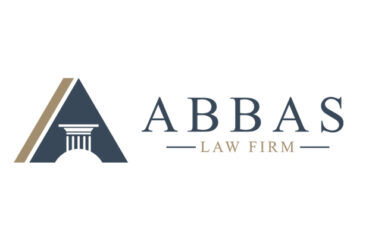What is Tax Law in Canada?
Canada’s tax law framework is a complex interplay of federal and provincial statutes that fund public services while influencing economic behavior. With Canadians paying an average of 42.5% of income in total taxes, understanding tax law is essential for individuals and businesses alike. This guide examines Canada’s tax structure, key legislation, compliance requirements, and recent reforms affecting taxpayers nationwide.
1. Foundations of Canadian Tax Law
A. Constitutional Framework
-
Federal Authority: Income tax, GST/HST, excise taxes (Constitution Act, 1867 s.91(3))
-
Provincial Authority: Resource taxes, property taxes, sales taxes (s.92(2))
-
Municipal Taxes: Derived from provincial delegation (property taxes)
B. Core Legislation
-
Income Tax Act (Federal)
-
3,000+ pages with 100+ annual amendments
-
-
Excise Tax Act (GST/HST rules)
-
Provincial Tax Acts (e.g., Ontario Taxation Act)
2023 Data: CRA collected $452B in federal taxes, provinces collected $190B
2. Personal Taxation
A. Income Tax Basics
-
Progressive Rates (Federal 2024):
-
15% ($0-$53,359)
-
20.5% ($53,359-$106,717)
-
26% ($106,717-$165,430)
-
29% ($165,430-$235,675)
-
33% ($235,675+)
-
-
Provincial Additions (Range: 4% PEI to 25.75% NS)
Effective Rate Example: $85,000 earner in Ontario pays ~24.5% combined
B. Key Deductions/Credits
-
Basic Personal Amount ($15,705 federal)
-
RRSP Contributions (18% of earned income)
-
Medical Expenses (3% of net income threshold)
-
Charitable Donations (29% credit for $200+ donations)
2024 Change: New “Canadian Dental Care Plan” tax credit
3. Business Taxation
A. Corporate Tax Rates
| Business Type | Federal Rate | Provincial Range | Combined Rate |
|---|---|---|---|
| General Corp | 15% | 8-16% | 23-31% |
| CCPC (Small Biz) | 9% | 2-4% | 11-13% |
CCPC Conditions: <$500K income, Canadian-controlled
B. Key Considerations
-
Fiscal Year Choice (Except for professionals)
-
SR&ED Credits (35-68% R&D refund)
-
Dividend Strategies (Eligible vs. non-eligible)
Case Law: Ludco Enterprises (2001 SCC) established “profit purpose” test
4. Sales Taxes
A. GST/HST
-
Federal GST: 5%
-
HST Rates: 13% (ON), 15% (NS/NB/NL/PEI)
-
Exemptions: Basic groceries, healthcare, education
B. Provincial Sales Taxes
-
PST: BC (7%), MB (7%), SK (6%)
-
Quebec Sales Tax: 9.975% + GST
Registration Threshold: $30,000 in taxable supplies
5. Compliance & Enforcement
A. Filing Requirements
-
Individuals: April 30 deadline (June 15 for self-employed)
-
Corporations: 6 months after fiscal year-end
-
GST/HST: Quarterly/annual filings
B. Audit Process
-
Desk Audit (Document review)
-
Field Audit (On-site examination)
-
Reassessment (3-4 year limitation period)
2023 Stats: CRA audited 30,000+ businesses, recovered $2.4B
C. Penalties
-
Late Filing: 5% + 1%/month (max 12 months)
-
Gross Negligence: 50% of tax avoided
6. Tax Planning Strategies
A. Income Splitting
-
Spousal RRSPs
-
Family trusts (Kiddie Tax rules apply)
-
Prescribed-rate loans (1% Q2 2024)
B. Capital Gains Exemptions
-
Lifetime Capital Gains Exemption ($1,016,836 in 2024)
-
Principal Residence Exemption
C. Estate Planning
-
Testamentary trusts
-
Life insurance strategies
-
Charitable remainder trusts
7. Recent Developments (2024)
A. Underused Housing Tax
-
1% tax on vacant foreign-owned property
-
Expanded reporting requirements
B. Alternative Minimum Tax
-
Increased from 15% to 20.5%
-
$173,000+ income threshold
C. Clean Energy Credits
-
30% ITC for clean tech investments
-
15% for carbon capture projects
D. Cryptoasset Reporting
-
New CRA guidance on NFT taxation
-
Mandatory disclosure for $10,000+ crypto transactions
8. Provincial Variations
A. Alberta
-
No PST
-
Lowest corporate rates (8% general)
-
Tax incentives for film/tech
B. Quebec
-
Separate tax administration (Revenu Québec)
-
Highest marginal rate (53.31%)
-
Distinct R&D credits
C. British Columbia
-
Property transfer tax (1-5%)
-
PST on software services
9. Tax Dispute Resolution
A. Objection Process
-
90 days to file notice
-
50% success rate for taxpayers
B. Tax Court of Canada
-
Informal Procedure (<$25,000 in dispute)
-
General Procedure (Unlimited amounts)
Case Example: Canada v. Deans Knight (2023 SCC) clarified loss trading rules
10. International Taxation
A. Tax Treaties
-
94 countries (US treaty most utilized)
-
Non-Resident Withholding Tax (25% reduced by treaty)
B. Foreign Reporting
-
T1135 (>$100K foreign property)
-
FBAR (US accounts >$10K)
C. Anti-Avoidance Rules
-
GAAR (General Anti-Avoidance Rule)
-
Subpart 4 Tax (CFC rules)
11. The Future of Tax Law
Emerging trends:
-
Global Minimum Tax (15% corporate floor)
-
Wealth tax proposals
-
Carbon pricing adjustments
-
AI-assisted audits
12. Case Study: McMillan v. Canada (2023)
This Federal Court ruling:
-
Upheld CRA’s position on crypto staking rewards
-
Established cost basis calculation method
-
Impacts 12% of Canadian crypto investors
Conclusion
Canada’s tax laws represent a constantly evolving balance between revenue generation and economic policy. With recent reforms targeting housing affordability, clean energy, and digital assets, taxpayers face increasing complexity in compliance. Proper planning and professional advice can help navigate this landscape while ensuring full compliance with Canada’s rigorous tax enforcement regime.
As former Supreme Court Justice Iacobucci noted in Shell Canada v. Canada: “Tax law is about legal form, not economic substance.” This principle continues guiding Canadian tax jurisprudence, reminding taxpayers that understanding the letter of the law is just as important as grasping its financial impacts. Whether you’re an individual taxpayer, small business owner, or corporate finance professional, staying informed about tax law changes is essential for financial health in Canada’s sophisticated taxation system.






















